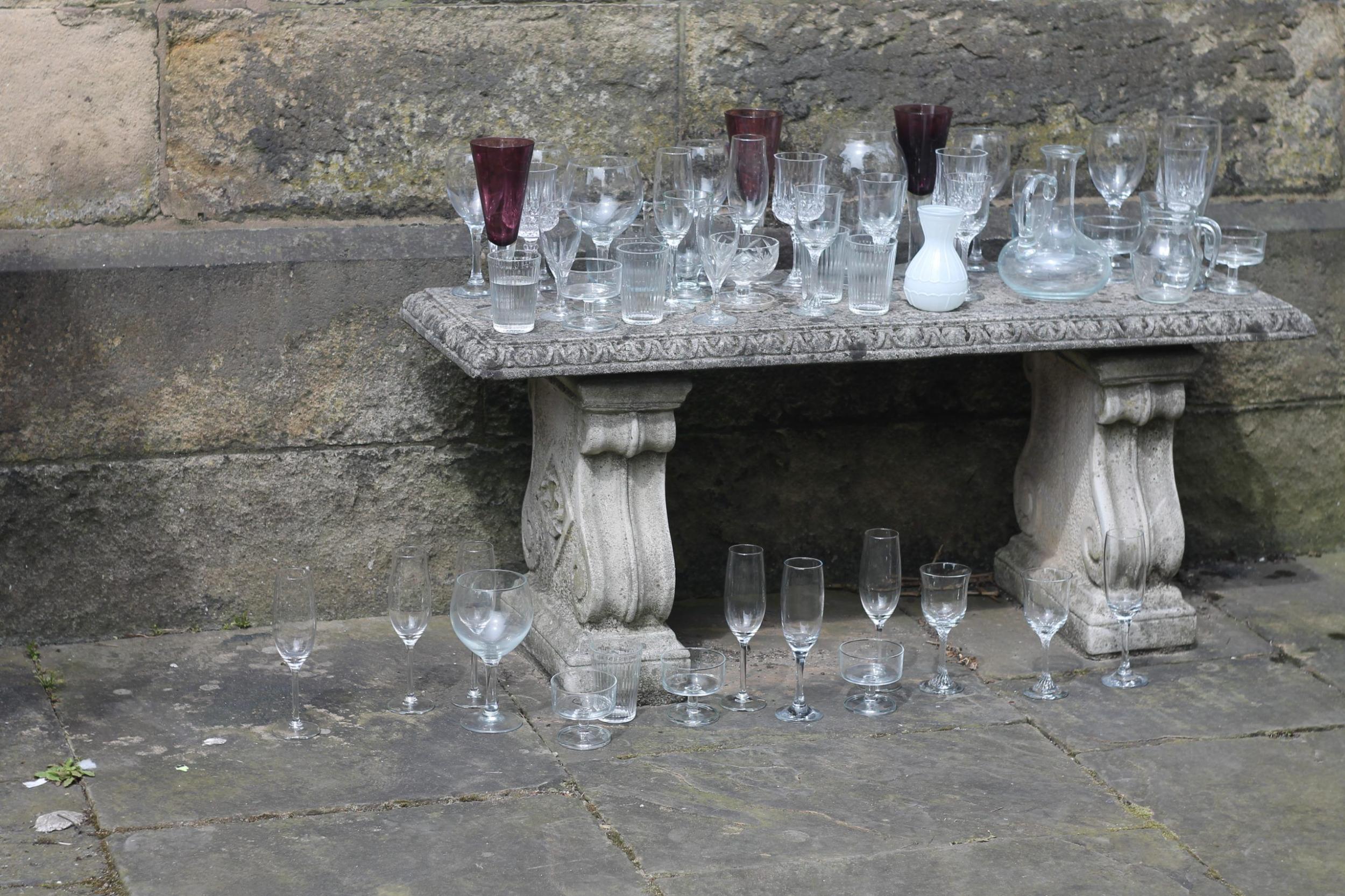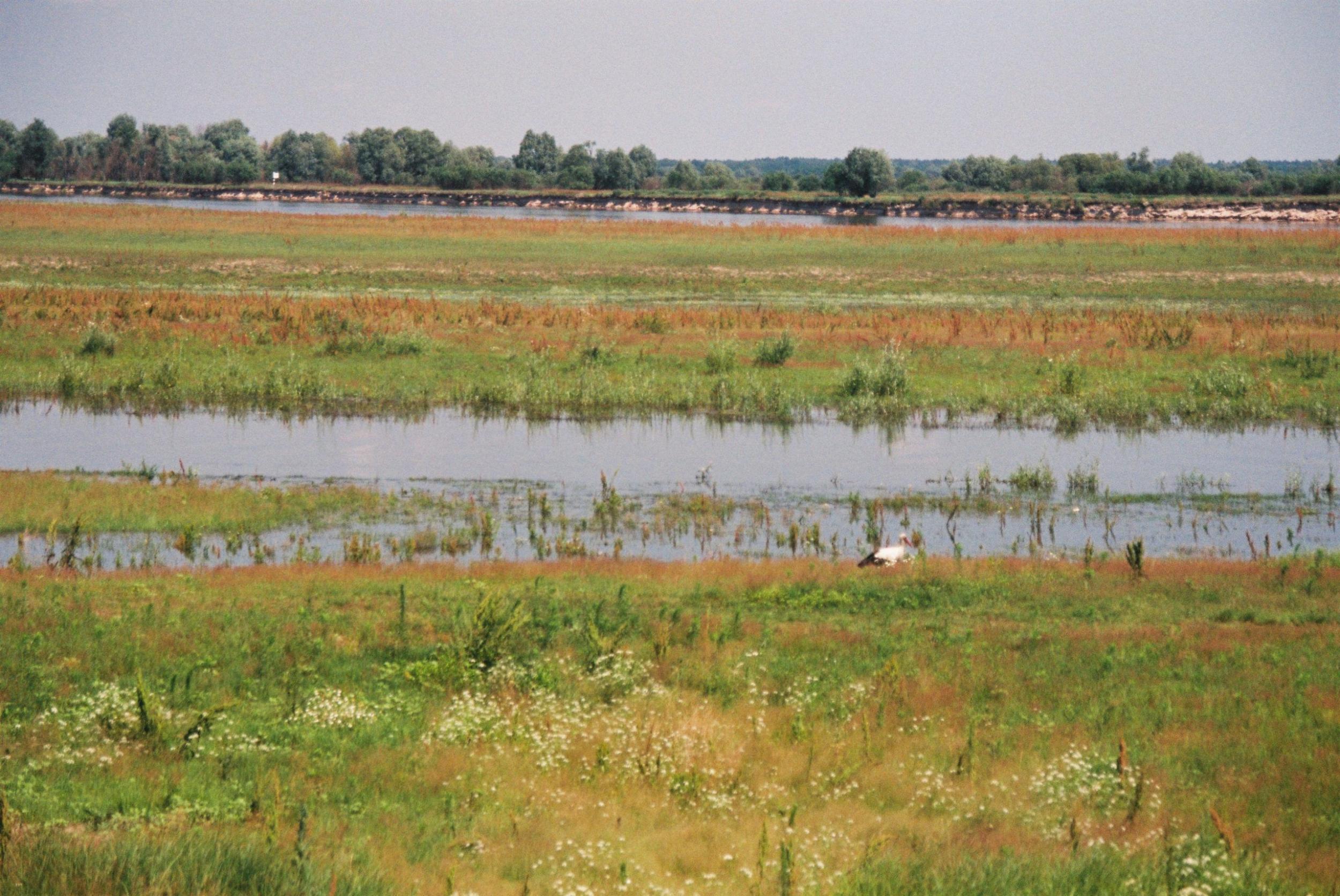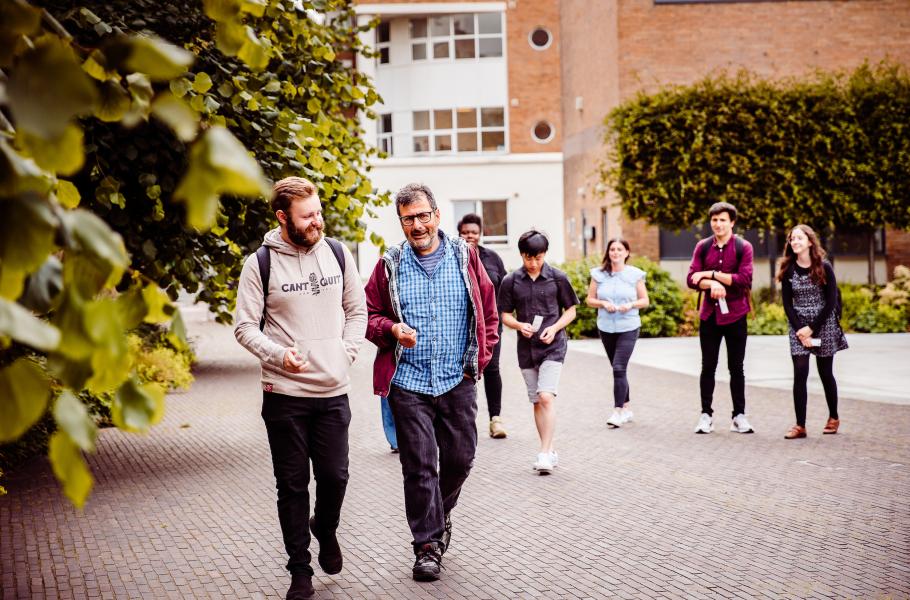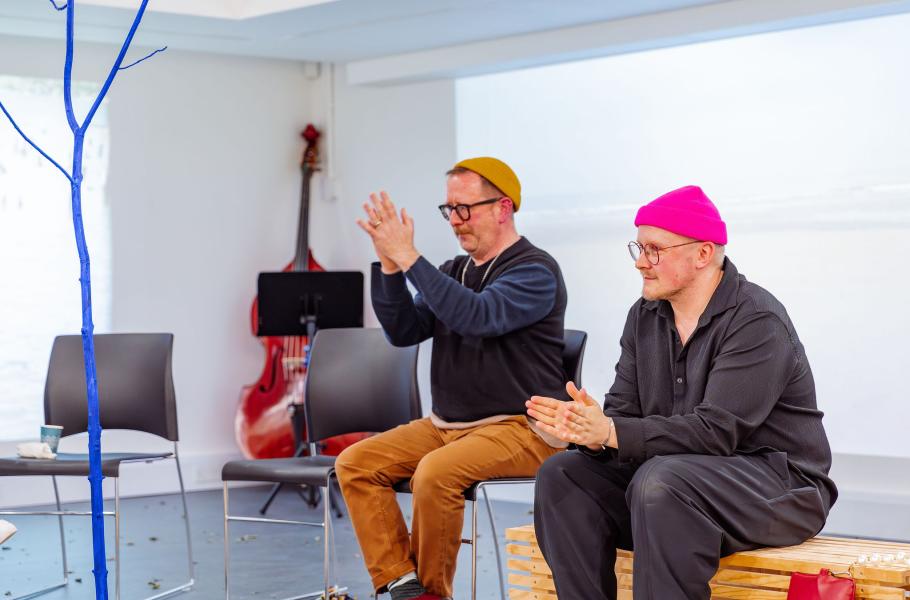Let the Rivers Flow
Maria Gulina
In Minsk, my home city, there is a street called Niamiha – one of the oldest parts of the city, the one that was first mentioned in a chronicle in 1067. There was a river there of the same name, the river that is now running in a pipe underground, the river that somehow reappears every summer on the surface – the street Niamiha is flooded absolutely every year when the July thunderstorms come.
I was thinking about the hidden Niamiha river when I stood on the streets of Lancaster participating in the Flow performance, when we carefully spilt the water from our beautiful elegant glasses to the gray asphalt, recreating the mill race beneath us. I’m in Lancaster for only a year of my Master studies, but I want to belong to this place, to get to know its people and its hidden stories. Participating in the event, learning the history of the Mill Race and recreating it was just the right way to do it.

Rivers are a vital part of any city, connecting the tissue of urban life. Many of them were put underground and forgotten, but some of them are revived. Sometimes it happens in an ultimate way, as it was in Seoul, where a giant highway was removed to give way to the river Cheonggyecheon, which had previously been covered. It’s an exemplary urban restoration project: a place for cars became a place for the community. The green corridor is 8 km long with a 400 ha park featuring waterfalls, bridges and running tracks, and provides a habitat for nature, preserves cultural heritage, and offers access to nature for the public, flood control and microclimate regulation.
I have my own fight for a river. It’s not an urban river, it’s river Prypyat, one of the biggest rivers in Belarus and one of the last wild and free flowing rivers in Europe. The Prypyat winds through a unique border region in Belarus and Ukraine called Polesia. It’s a great intact floodplain, a labyrinth of wetlands, forests, islands, swamps and lakes crucial for biodiversity. It’s been under threat since 2013, when the governments of Poland, Belarus and Ukraine decided to construct a shipping channel – the so called ‘E40 waterway’ – linking the Black Sea and the Baltic. To accommodate the ships the channel must be at least 2.5 meters deep, and constructing it would mean destroying the river Prypyat in its wild state. We – a coalition of environmental NGOs – fought for our river Prypyat, and not without some success. Now the Polesia region is under a threat that we couldn’t have possibly thought of – the war.

I remember another event by Lancaster Arts – the concert of Echo Vocal Ensemble, where they performed Poem for a dried up river, a performance piece based on the poem by Alice Oswald. A water nymph tries to draw water from the limestone riverbed. I was amazed how this piece sounded in Lancaster Priory, how the performers really did make the river appear from the stones of the Priory – only by the means of their voices. No musical instruments, all waves, splashes and bubbles.
a Roman water nymph made of bone
being the last known speaker of her language
she tries to summon a river out of limestone
As we stand on the street where the river in Lancaster used to be, as we breathe, pass the words, sounds and movements to each other in waves, as we recite the magic lines about water flowing to the sea, it starts to rain gently. I take it as a good sign: the nature joining and blessing our small performance.
Maria Gulina is a media and culture student in her Master year at Lancaster University. She comes from
Minsk, Belarus, where she worked as an editor for an online travel-magazine 34travel and was involved in
work of environmental NGO Bahna.




